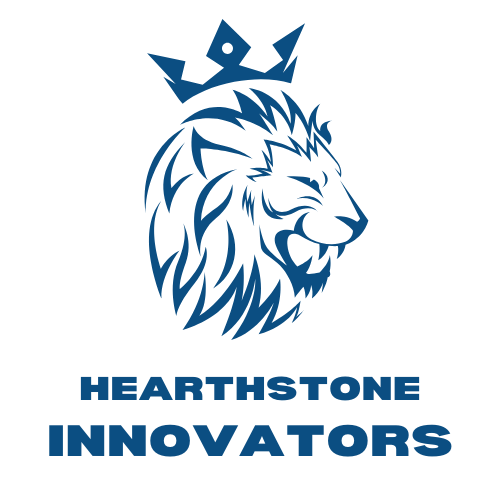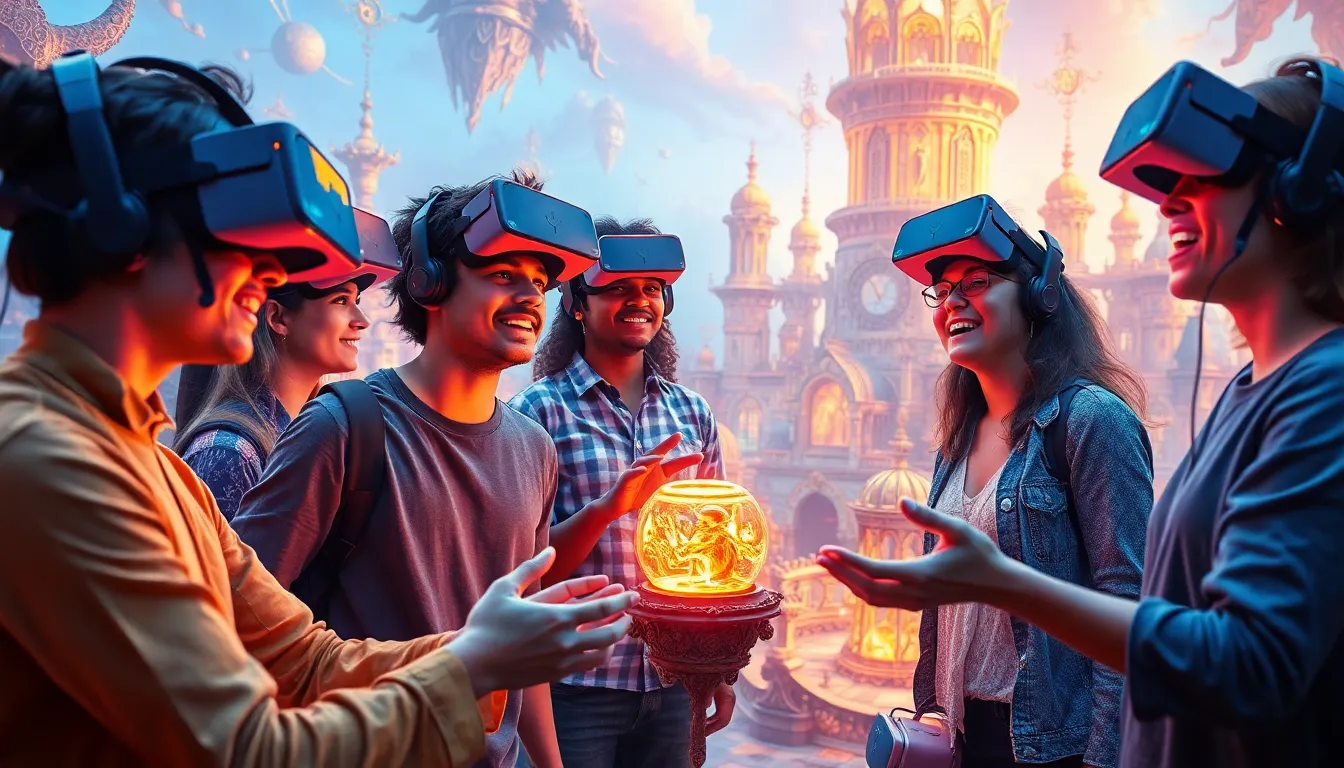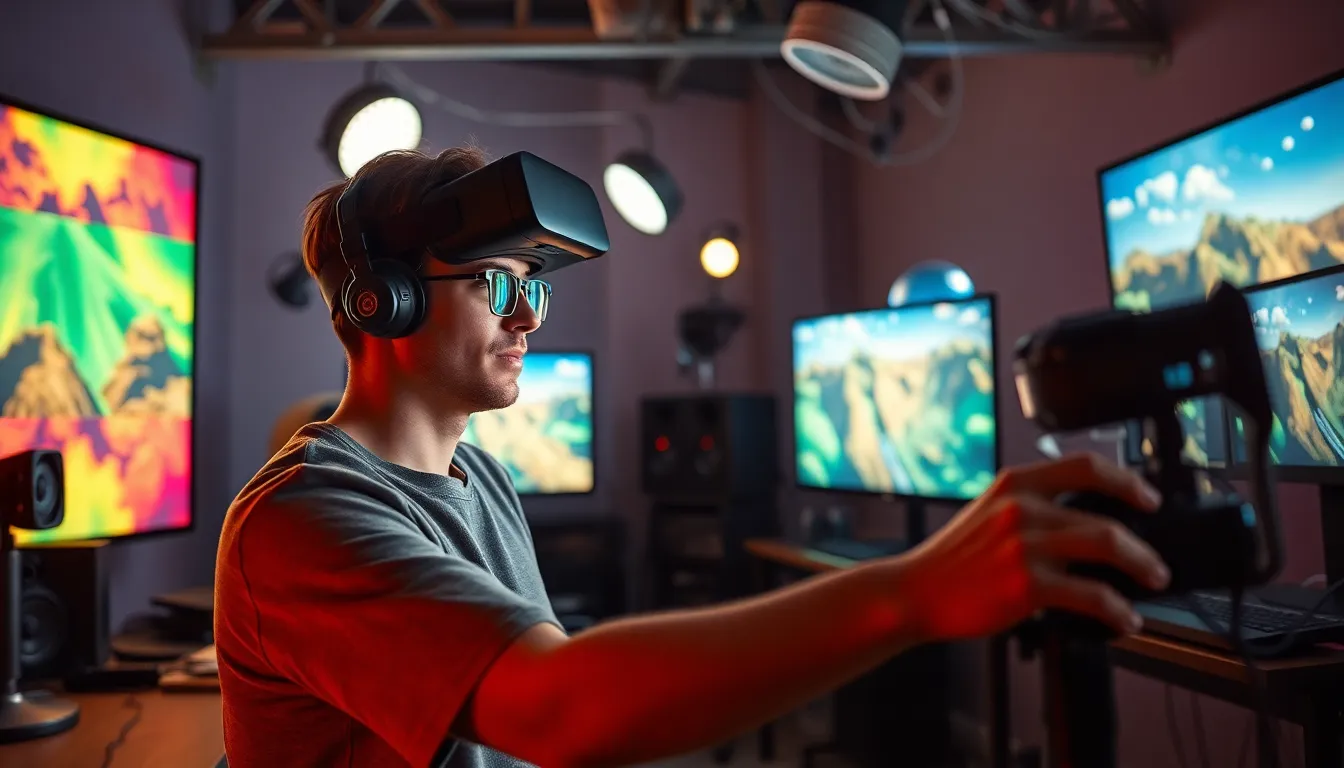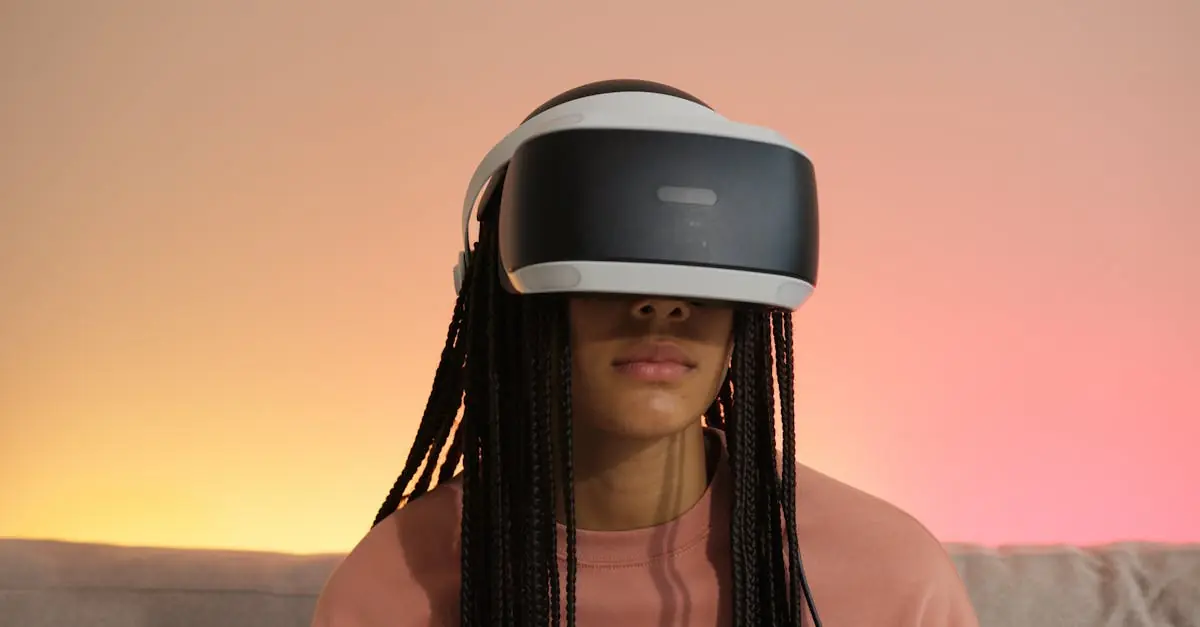Imagine stepping into a world where puzzles come to life and your living room transforms into a mind-bending labyrinth. That’s the magic of VR puzzle exploration. It’s not just about solving riddles; it’s about immersing oneself in a universe where every corner hides a clue and every object could be the key to unlocking the next thrilling challenge.
Table of Contents
ToggleOverview of VR Puzzle Exploration
VR puzzle exploration engages players in a rich, immersive environment. Participants navigate intricate worlds designed with interactive puzzles that stimulate critical thinking. This type of gameplay emphasizes exploration, allowing users to uncover hidden clues scattered throughout the environment.
Complex challenges arise as players interact with their surroundings. Objects in VR settings can provide essential hints necessary to solve intricate riddles. The allure of discovery draws participants deeper into the virtual realm, creating a sense of urgency to explore every nook and cranny.
Players often experience a heightened sense of presence within these environments. Engaging with three-dimensional elements fosters a unique connection to the game, making puzzle-solving feel more impactful. Success hinges on both observation and engagement, as overlooked details can lead to missed opportunities.
Emerging technologies enhance the experience further. Developers now incorporate advanced graphics and sound design, immersing players in visually stunning worlds with realistic auditory cues. Players may solve puzzles collaboratively or competitively, adding layers to the gameplay experience.
VR puzzle exploration reinvents traditional puzzle-solving elements, blending technology with creativity. Through this innovative approach, players discover an extensive range of puzzles tailored to various skill levels. Dynamic environments and interactive gameplay combine to ensure that no two experiences are truly the same.
Benefits of VR Puzzle Exploration
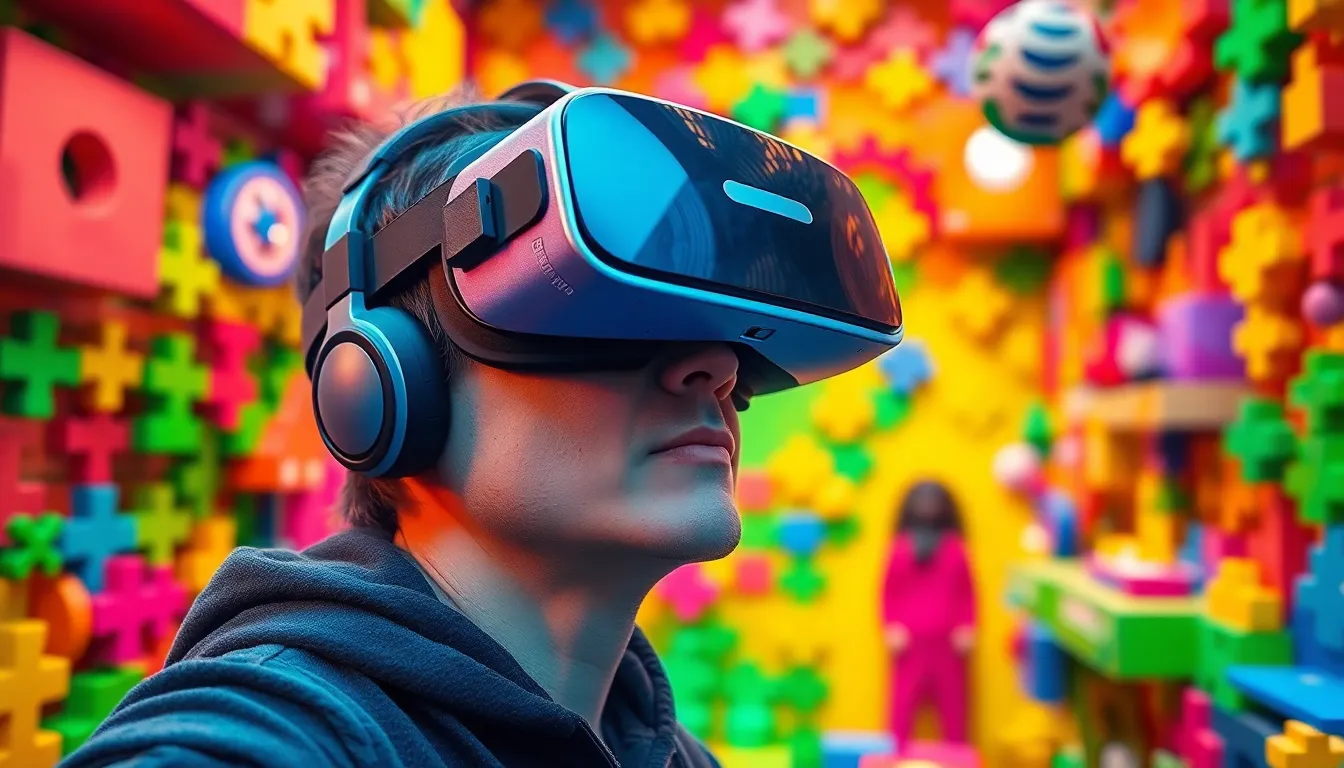
VR puzzle exploration provides numerous advantages, enhancing the overall gaming experience for players. This innovative approach to puzzle-solving promotes academic growth and enjoyment.
Enhanced Engagement
Engagement improves drastically in VR puzzle exploration. Players actively interact with their surroundings, leading to a strong connection to the game. As they manipulate objects and investigate clues, attention to detail becomes paramount. This immersion encourages players to think critically and solve intricate puzzles. Choices made within the game environment directly affect outcomes, creating a sense of ownership and responsibility. Players report feeling more invested due to the rich narrative elements woven into the gameplay. Each achievement fosters satisfaction, motivating further exploration and challenge.
Immersive Experiences
Immersive experiences distinguish VR puzzle exploration from traditional formats. Virtual environments captivate players with stunning graphics and lifelike sound design. Every puzzle confronts participants with realistic challenges that mimic real-world problem-solving. Exploration of three-dimensional spaces invites players to engage with their surroundings meaningfully. The thrill of discovery amplifies as players navigate richly detailed worlds filled with hidden clues. Collaborative gameplay enhances these experiences, allowing friendships and teamwork to develop through shared problem-solving. Players often find themselves lost in the adventure, further solidifying the impact of immersive gameplay.
Popular VR Puzzle Games
Virtual reality offers a variety of engaging puzzle games that attract players with immersive challenges and captivating narratives. Here are two standout titles that exemplify the genre.
Game 1: The Room VR: A Dark Matter
The Room VR: A Dark Matter captivates players with its atmospheric design and intricate puzzles. Set in a mysterious world, the game offers a blend of tactile interactions and beautifully rendered environments. Players manipulate objects, examine hidden mechanisms, and solve complex riddles to uncover secrets in a dark narrative. Realistic sound effects and detailed visuals enhance the experience, immersing players in a chilling storyline. The game features intuitive controls, making it accessible for newcomers while maintaining depth for seasoned puzzlers. Collaborative play aspects also encourage teamwork, fostering connections as players work together to solve challenging mysteries.
Game 2: Myst
Myst revives a classic adventure with a fresh VR twist, inviting players to explore stunning, surreal landscapes filled with intricate puzzles. The game’s rich storytelling and atmospheric environments encourage extensive exploration. Each age offers unique challenges that engage players’ problem-solving skills, requiring them to piece together clues and secrets. Immersive graphics create a visually striking experience, allowing players to lose themselves in its world. Myst employs innovative gameplay mechanics that make interaction feel natural and rewarding. This title balances nostalgia with modern gaming elements, appealing to both new players and devoted fans seeking a rich puzzle adventure.
Designing Effective VR Puzzles
Creating effective VR puzzles involves careful consideration of various design factors, including challenges faced during development and how players interact with the environment.
Challenges in Design
Designers encounter multiple challenges in creating engaging VR puzzles. Balancing complexity with accessibility remains a key concern; puzzles must be challenging yet solvable without causing frustration. Additionally, ensuring intuitive navigation is critical. Players often get lost or disoriented in intricate environments, so a clear path or visual indicators helps maintain flow. Incorporating feedback mechanisms also proves essential. Designers need to provide players with hints or cues to prevent prolonged stagnation on difficult puzzles, promoting continued exploration. Testing and iteration is vital throughout the design process. Playtesting with diverse user groups reveals usability issues, allowing adjustments that align with players’ cognitive styles.
Player Interaction
Player interaction significantly influences the enjoyment of VR puzzles. Engaging users in hands-on problem-solving fosters a meaningful connection with the game. Using natural gestures for interactions enhances immersion, as players feel more present when using their hands to manipulate objects. Collaborative puzzles create opportunities for social engagement, inviting friends to solve challenges together. Designing for multiple player types expands the experience. Some players thrive on cooperation, while others enjoy a competitive edge. Facilitating both styles ensures inclusivity and variety in gameplay. Each interaction type contributes uniquely, making the overall experience richer and more appealing.
Future Trends in VR Puzzle Exploration
Innovative technologies promise to revolutionize VR puzzle exploration. Developers increasingly integrate artificial intelligence into puzzles, adapting challenges based on player performance. Enhanced interactivity emerges through augmented reality and haptic feedback, delivering tactile sensations that elevate immersion. Higher-resolution graphics ensure stunning visuals, capturing players in intricate environments and making exploration more engaging.
Incorporating social platforms into gameplay encourages community interaction. Players can collaborate with friends or connect with others worldwide in real-time puzzles. Flexible gameplay structures present new models, allowing players to experience dynamic storylines that adapt to their choices. Further, integration of machine learning analyzes player behaviors, tailoring experiences that cater to individual preferences.
Accessibility and inclusivity also shape future trends. Designers prioritize adjustable difficulty levels and adaptive mechanics, ensuring that all players can enjoy their experiences fully. Thoughtful design choices create intuitive navigation suited to various cognitive styles. Enhanced feedback mechanisms play a crucial role, guiding players through challenges and minimizing frustration.
Furthermore, cross-platform play expands the reach of VR puzzle experiences. This development allows console and PC players to team up with VR users, fostering a diverse gaming community. Lastly, environmental storytelling gains traction, as immersive worlds become yet more compelling through integrated narratives that reveal themselves gradually. Such advancements pave the way for richer, more profound puzzle experiences in the world of VR exploration.
VR puzzle exploration offers a unique blend of challenge and immersion that captivates players. The ability to interact with intricate environments while solving complex puzzles enhances critical thinking and fosters a deep connection to the gameplay. As technology evolves, so do the possibilities within this genre, promising even more engaging experiences.
The future holds exciting advancements like AI-driven challenges and enhanced interactivity that will redefine how players approach puzzles. With a focus on community and accessibility, VR puzzle exploration is set to become more inclusive, inviting a diverse audience to join in the fun. As players continue to explore these virtual worlds, the thrill of discovery and problem-solving will undoubtedly keep them coming back for more.
